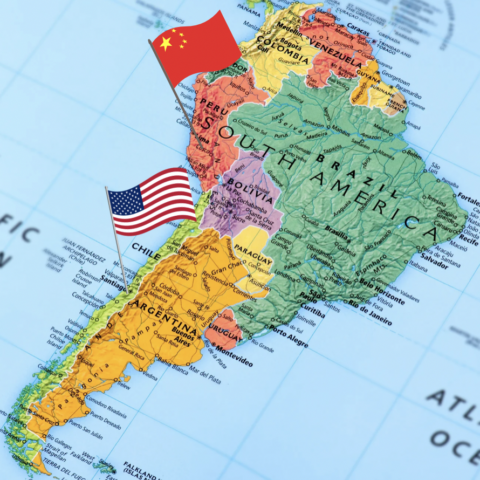By: Ian Davis

Although China and Taiwan are only separated by a shallow, 120-mile stretch of water, the two countries have yet to establish official diplomatic channels of communication. For 65 years, an absence of political dialogue has threatened to alter the regional status quo by challenging China’s hierarchical role at the top of regional power.
However, this may soon change. Last week, after more than six decades of authorized diplomatic silence, Chinese and Taiwanese officials overcame their maritime divide and spoke face-to-face. Despite the lack of tangible policy progress made, the meeting between Zhang Zhijun of China’s Taiwan Affairs Office and Wang Yu-chi of Taiwan’s Mainland Affairs Council seems to have irreversibly changed the nature of cross-strait relations. The content of the gathering largely concerned the early stages of establishing clear channels of official dialogue, a modest yet pragmatic first step.
The easing of mutual diplomatic non-recognition can be heavily attributed to two areas: the policies of Taiwanese President Ma Ying-jeou and the increasing economic interaction between Taiwan and the PRC. Since his election in 2008, President Ma has embarked on public and political campaigns of rapprochement with the People’s Republic of China (PRC). Facing a strong Taiwanese public sentiment favoring a continued and perhaps intensified independent status, President Ma’s direction has instigated the measured metamorphosis of Taiwan’s relationship with China. Yet Mr. Ma’s intensified campaign regarding rapprochement was cast into the forefront of Taiwanese politics as a result of Sino-Taiwanese economic interplay.
Such a gaping void of diplomatic contact is deeply rooted in the Chinese Civil War. Competing political entities fought viciously for the right to rule the mainland. Communist forces, under the emerging leadership of Mao Zedong, held influence in China’s rural territory, while the Kuomintang (KMT), a nationalist party under Chiang Kai-shek, possessed key cities in China’s north. Following a military route that few outside the Communist camp could have predicted, Mao Zedong and his allies swiftly defeated the KMT, and compelled them to flee in the face of defeat.
The KMT, who had been the de facto custodians of the Republic of China (ROC) prior to the Communist victory, hastily relocated the ROC onto the island of Taiwan just as the Chinese Communist Party (CCP) sought to establish the People’s Republic of China on the mainland. Each body claimed to be the sole and legitimate representative of the Chinese people. The PRC vehemently denied the KMT’s authority on Taiwan, and claimed that the island was by right, its own.
As the 20th century progressed, both political units worked to consolidate power and assert their rule in their respective territories. The KMT faced a unique challenge in incorporating existing Taiwanese attitudes pertaining to cultural and political autonomy. To gain legitimacy in the eyes of the local Taiwanese, the KMT embarked on a program of extensive economic recovery and development. A capable combination of foreign support land reform, reduced educational barriers and administrative guidance facilitated Taiwan’s unprecedented economic development.
An unforeseen consequence of Taiwan’s economic prowess was the emergence of a robust, progressive, and vocal middle class who increasingly called for democratic values in governance. Coupled with the evolution of the Dangwai, or “outside the party (a reference to the KMT),” movement in the early 1970s, KMT leaders were forced to abolish existing bans on formal political parties and introduce township and provincial level elections. The process of Taiwanese democratization culminated in 2000, when Chen Shui-ban became the first non-KMT politician to assume the presidency.
Throughout this period, Taiwan never failed to recognize the vast economic potential present in economic exchange with the mainland. Although diplomatic cables remained silent, cross-strait trade, tourism, and investment in the late 1980s promoted social integration. However, Taiwan’s economic success in dealing with the PRC contained a potentially destabilizing ramification. The asymmetrical relationship saw Taiwan exporting a far greater percentage of its total exports to the PRC than the PRC exported to Taiwan. Taiwan became a hostage to the mainland, due to its reliance on the country in trade. For this reason, the state of cross-strait affairs is as important to Taiwan as it has ever been.
Today, each side makes a competing claim on the unique diplomatic circumstance. The PRC is committed to the One China Principle, which recognizes only one China in the world. It argues that the mainland and Taiwan belong to the same singular entity, in which the PRC is the only possible legitimate authority. Taiwan’s One China Policy likewise recognizes one China, but acknowledges an ”agree-to-disagree” interpretation of what that one China is.
Despite an absence of certified diplomatic dialogue, unofficial links have surfaced in the two states’ relationship. Mao’s successor Deng Xiaoping projected the ”Three Links Proposal,” which sought to instigate transportation, postal, and trade links between the locales. These links were never officially recognized by Taiwan, yet cautious steps towards their actualization took place. In 2008, President Ma officially recognized the Three Links and prudently began to perpetuate them.
Through the direction of Taiwanese President Ma Ying-jeou, it is evident that Taiwan is drawing closer towards the PRC. What remains to be seen however, is the intended outcome of further integration. Reunification with the PRC seems unlikely after more than 60 years of separatism. National identities, political attitudes, and ways of life have all diverged. With its hegemonic status in the current international order, the United States would not be thrilled at the prospect of communist PRC incorporating one of democratization’s most distinguished examples into its territory.
Yet complex global interdependence has changed the calculus of diplomatic communication. Shared concern for economic development has brought about today’s reality: direct diplomatic communication is not necessary for certain meaningful and substantive inter-state outcomes. Although the PRC and Taiwan had never diplomatically converged before last week, their economically integrated relationship has been undeniable.
The unfolding of this new diplomatic partnership will be slow. As Taiwanese leaders warm their constituents up to further dialogue with the PRC, public attitudes concerning Taiwan’s next step will unravel. For now, the PRC holds a strategic upper hand in reconciling the dispute. Two decades of social and economic integration has facilitated the progression of political dialogue. As the PRC’s economic leverage pans out, it will force Taiwan to make a difficult choice: concede, or abandon an invaluable source of revenue.


